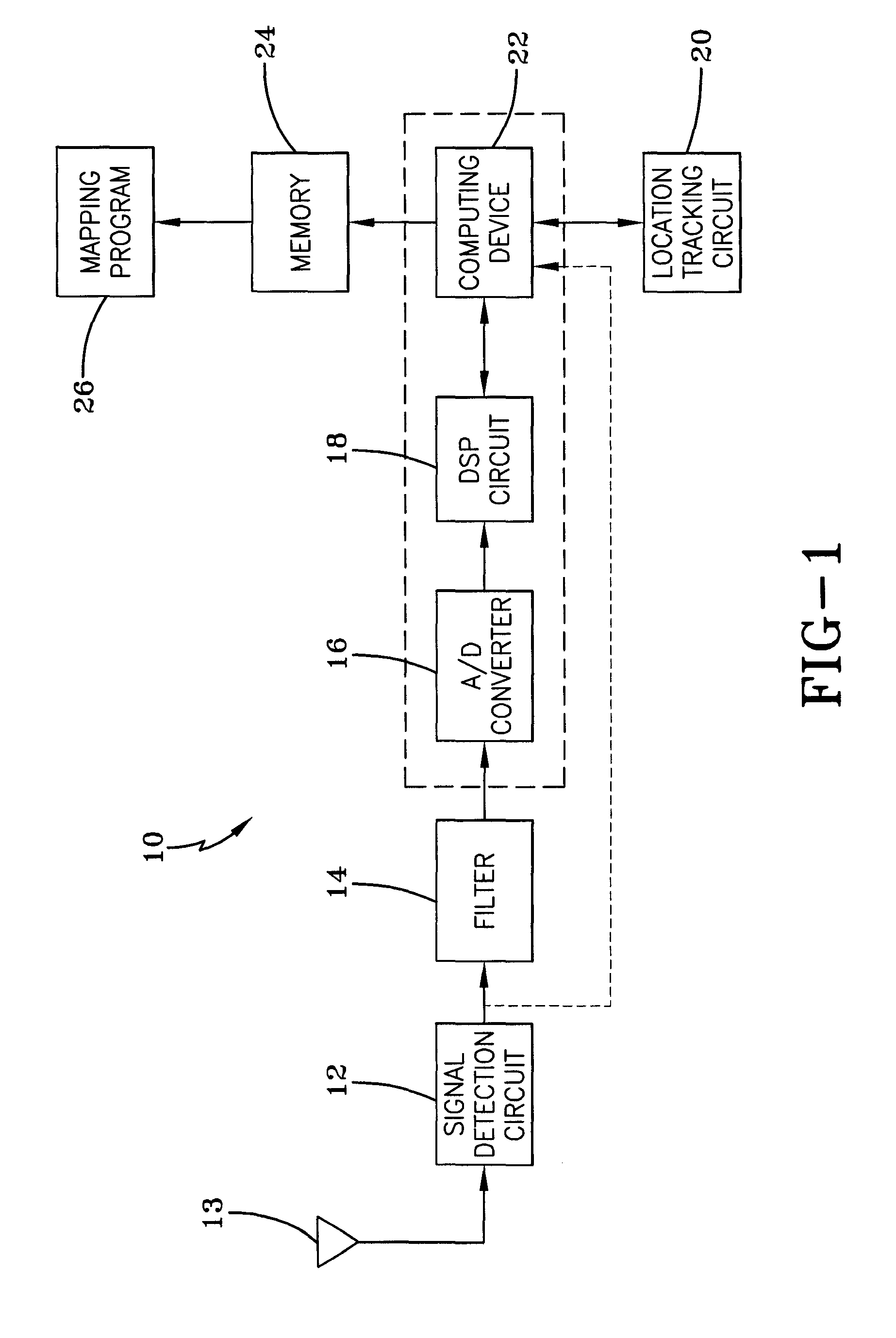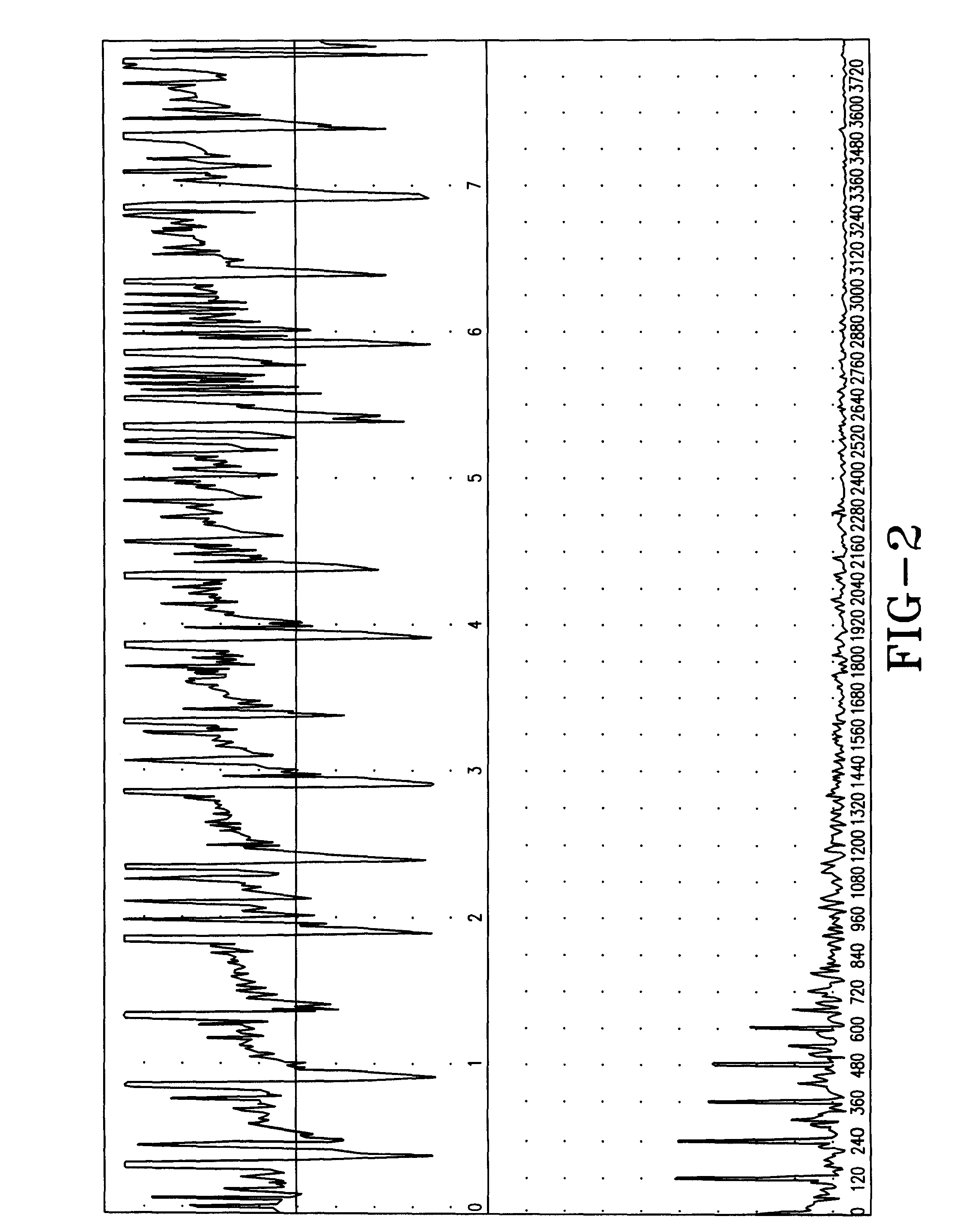Hand-held system and method for detecting impaired electric power equipment
a technology of impaired electrical equipment and hand-held devices, which is applied in the direction of electric devices, instruments, transportation and packaging, etc., can solve the problems of limiting or disrupting the operation of the electrical system, electromagnetic radiation may interfere with the operation of other electrical systems, and many sophisticated electrical systems are becoming increasingly sensitive to the effects of electromagnetic radiation
- Summary
- Abstract
- Description
- Claims
- Application Information
AI Technical Summary
Benefits of technology
Problems solved by technology
Method used
Image
Examples
examples
[0044]One exemplary embodiment of a system of the present invention is a versatile tool for identifying the source of electromagnetic interference that may be used in different ways such as described below:[0045]1. In one example, a system may be used to evaluate a utility pole from the ground. For instance, when patrolling for EMI, the results may not clearly point to a single pole. In this case, an exemplary embodiment of a system may help to determine which pole(s) actually contain EMI sources.[0046]2. Use an EMI patrolling method (such as an exemplary system of the present invention that is transported by a vehicle) to find the general location of the strongest EMI level for a given area.[0047]3. Begin by setting the exemplary system's attenuation switch to 0 db and gain control to 10. Approach the pole nearest to the maximum signal location identified in step 1.[0048]4. Position the antenna of the exemplary system against the wood of the pole or against the pole ground. If a st...
PUM
 Login to View More
Login to View More Abstract
Description
Claims
Application Information
 Login to View More
Login to View More - R&D
- Intellectual Property
- Life Sciences
- Materials
- Tech Scout
- Unparalleled Data Quality
- Higher Quality Content
- 60% Fewer Hallucinations
Browse by: Latest US Patents, China's latest patents, Technical Efficacy Thesaurus, Application Domain, Technology Topic, Popular Technical Reports.
© 2025 PatSnap. All rights reserved.Legal|Privacy policy|Modern Slavery Act Transparency Statement|Sitemap|About US| Contact US: help@patsnap.com



